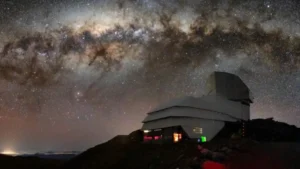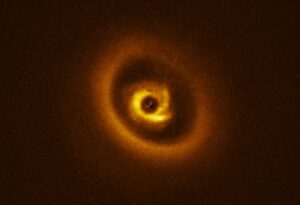If you’re attached to the inscrutability of the dark side of the moon, don’t look.
A new image from NASA has summoned the dark into the light, revealing one crater on the satellite’s unexplored side like never before. The location may even unlock the discovery of water ice on the moon.
The Shackleton Crater formed when a comet augured into the moon’s south pole about 3.6 billion years ago. And thanks to extremely sensitive camera equipment on board a Korean spacecraft, humans can finally glimpse it.
Seeing the dark side of the moon (where “dark” refers to “unknown” rather than “unlit”) used to be impossible. Its synchronous rotation kept it behind the rest of the planet from our point of view, impossible to witness without sunlight.
But technology called ShadowCam is forcing the issue. The camera setup delivers over 200 times more light sensitivity in shadowed regions over other lunar cameras, ScienceAlert reported. It exposes targets using “earthshine,” or a reflection of the light from our planet.
That’s just what we needed to finally light up the Shackleton Crater. It’s situated at the moon’s south pole, which has recently provoked intense exploration thanks to its geologic complexity.

Illustration: David A. Kring/Lunar and Planetary Institute
Giant pockmark near the south pole
The Shackleton Crater is three times deeper than the Grand Canyon. It almost constantly receives direct sunlight in three sliver-shaped segments along its rim. That phenomenon has given it photographic shape before — just not substance.

A previous image of the Shackleton Crater, utilizing scant light on the crater rim. Photo: NASA/GSFC/Arizona State University
The substance could be the key. The temperature inside the Shackleton Crater lingers at a shatteringly cold -173 °C. According to NASA, that could indicate water ice.
NASA calls these areas “permanently shadowed regions,” or PSRs, and the fact that gases can freeze to their surfaces gives evidence that they may harbor ice.
“If significant water ice deposits are confirmed to exist in PSRs, they could be used as a resource for future human exploration. Layers of ice in PSRs, like the Shackleton Crater, may also hold records of what has been happening in the lunar environment for long periods of time,” the agency stated.
No human has set foot on the dark side of the moon, nor did any unmanned craft ever land there until 2019. The Apollo 8 astronauts became the first people to see it with their own eyes when they orbited the moon in 1968.
ShadowCam could help spur closer exploration through better mapping.
Astronomers in China also plan to deliver a probe to the Shackleton Crater in 2026 to drill for evidence of water ice.






